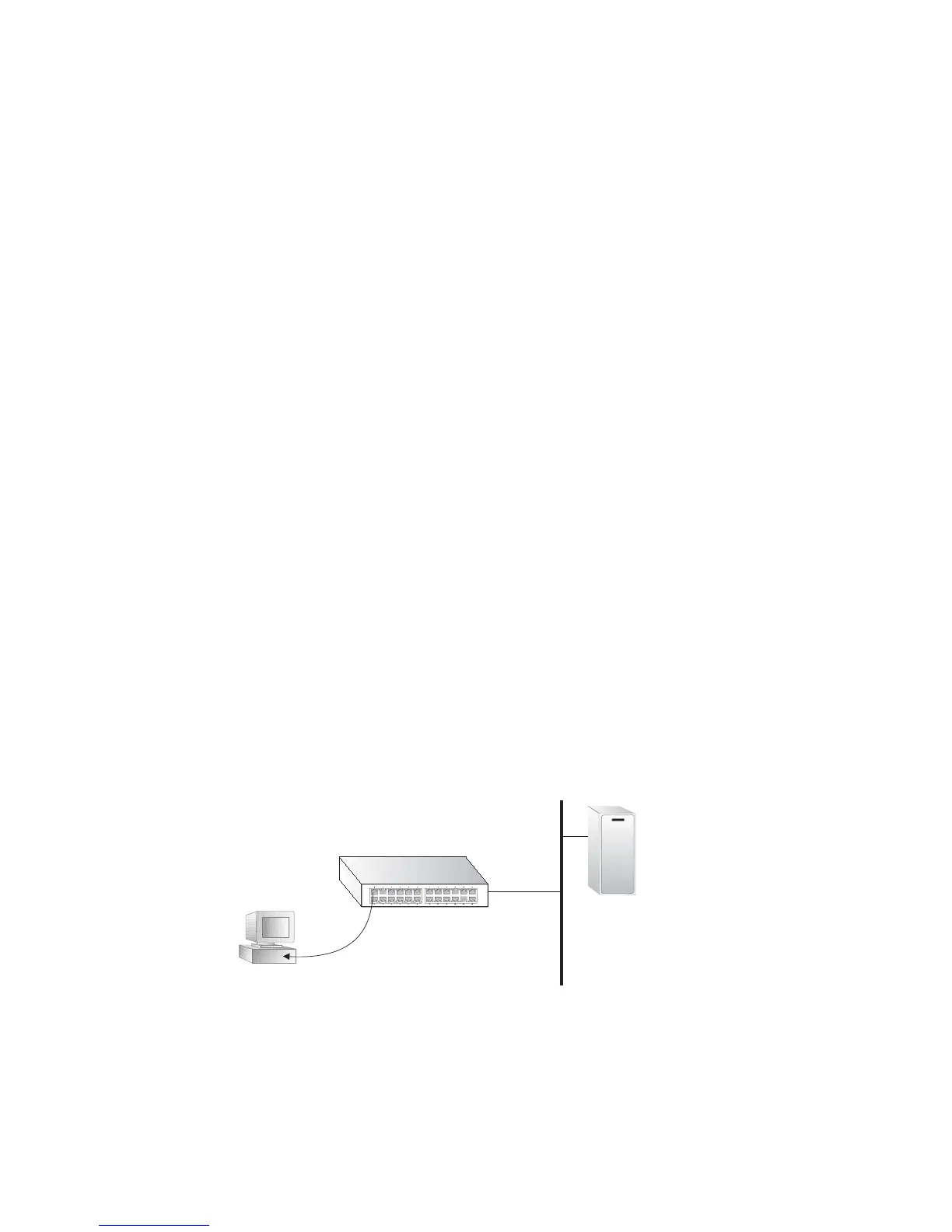Configuring the ECN330-switch
376 1553-KDU 137 365 Uen D 2006-06-16
6.18 Dynamic Host Configuration Protocol
Dynamic Host Configuration Protocol (DHCP) can dynamically allocate an
IP address and other configuration information to network clients when they
boot up. If a subnet does not already include a BOOTP or DHCP server, DHCP
client requests can be relayed to a DHCP server on another subnet, or the
DHCP server can be configured on the ECN330-switch to support that subnet.
When configuring the DHCP server on the ECN330-switch, an address pool can
be configured for each unique IP interface, or a static IP address manually
assigned to clients based on their hardware address or client identifier. The
DHCP server can provide the host’s IP address, domain name, gateway router
and DNS server, information about the host’s boot image including the TFTP
server to access for download and the name of the boot file, or boot information
for NetBIOS Windows Internet Naming Service (WINS).
6.18.1 Configuring DHCP Relay Service
The ECN330-switch supports DHCP relay service for attached host devices. If
DHCP relay is enabled, and the ECN330-switch sees a DHCP request
broadcast, it inserts its own IP address into the request so that the DHCP server
will know the subnet where the client is located. Then, the ECN330-switch
forwards the packet to the DHCP server. When the server receives the DHCP
request, it allocates a free IP address for the DHCP client from its defined scope
for the DHCP client’s subnet, and sends a DHCP response back to the DHCP
relay agent (that is, the ECN330-switch). The ECN330-switch then broadcasts
the DHCP response received from the server to the client.
Figure 157 DHCP Relay Service
Provides IP address
compatible with switch
segment to which client
is attached
DHCP
Server
